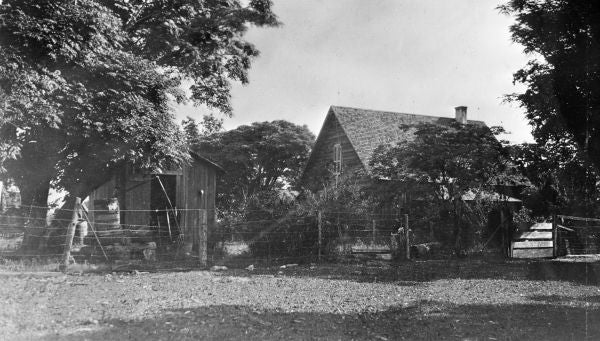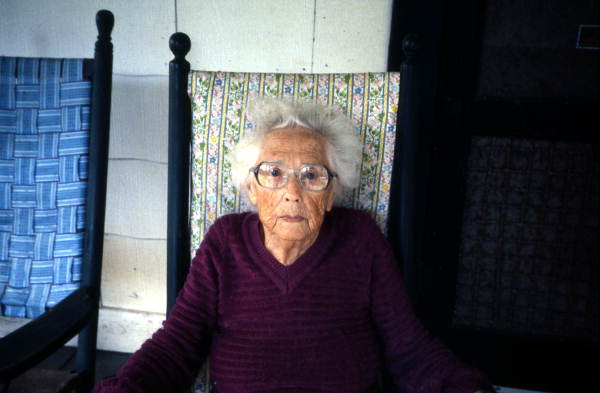
History
Dudley Farm is a one-of-a-kind authentic working Florida farm rather than a recreated farmstead. Eighteen buildings date from the 1880s to 1930s, and documents, photographs, furnishings and implements exist from the 1800s to the present. The rural vernacular architecture and cultural landscape help tell the story of the evolution of Florida farming through three generations of the Dudley family.
Miss Myrtle Dudley donated 24 acres of the original farmstead to the Florida Park Service in 1983 carrying out her mother’s wish to keep the farm intact.
P.B.H Dudley, Sr. property ownership and settlement
After the Seminole Wars ended and Florida became a state in 1845, many settlers from South Carolina arrived seeking farmland suitable for cotton production and the enslaved arrived by force to work these lands. Philip Benjamin Harvey (P.B.H) Dudley and wife Mary emigrated from South Carolina and first settled near Archer in 1852, purchasing the land now known as Dudley Farm in 1859. He rapidly established himself as a middle-class, agrarian capitalist through his ownership of thirty enslaved people and 960 acres of land In Alachua County.
The earliest homesite was built on the property before the Civil War: a double-pen, dog-trot log house northwest of the present farmhouse. All that remains of the “old home place” are portions of the limestone foundation. The remnants were described by Myrtle Dudley as belonging to slave cabins but may have been tenant farmer dwellings.
After serving in the Civil War as the Captain of the Alachua Rangers 7th Regiment, P.B.H. Dudley turned to raising cattle in addition to cotton, vegetable and forage crops. He worked to cut a road from his farm to Gainesville so cattlemen could drive their herds to market. Until the 1880s, “Dudley” was literally on the map as it was the community center, a crossroad connecting Newberry, Archer, Jonesville and Gainesville. The old road is still visible today.
P.B.H Dudley, Jr. and the farm expansion

When his father died in 1881, P.B.H. Dudley, Jr., known as Ben, built the present farmhouse to accommodate his family which grew to 8 girls and 4 boys. He also added a general store, separate kitchen, smokehouse, sweet potato storehouse, dairy and canning house, outhouses, corn crib and barn.
All were constructed of heart pine from the property.
The family grew cotton, corn, rice, millet, rye, oats, sugar cane and sweet potatoes. Milk, butter, eggs, turkeys and sausage were brought to Gainesville to be sold.
In this pre-mechanization era, the large family worked the labor-intensive farm with horses, mules and hired help, including tenants, day laborers or both. The laborers and tenants were paid with a "furnish" partly consisting of pork and sugarcane produced at the farm.
Dudley Farm 1918 to 1970
Ben died in 1918 and farm management was taken over by his wife Fannie and three sons, Ralph, Harvey and Frank. The Dudleys adapted their agricultural practices to the changing mechanized times, fluctuating markets and weather patterns. As cotton declined, the Dudleys replaced it with tobacco and built the curing barn in 1930.
The 1930s also brought electricity and the first tractor. The Dudley women provided for the table with an impressive vegetable garden and orchards. The flower garden was so admired that people took Sunday drives to see the roses and lilies.
From a successful chicken and egg business to cane grindings, the Dudleys remained one of the most substantial farms even through the Great Depression. Ralph Dudley was described as a leading farmer of Newberry and adapted his farming practices to changing times, as urbanization increased and rural populations decreased. Most of the siblings moved away to start their own careers and families. Ralph stayed and continued to raise cattle, tobacco and vegetable crops until his death in 1967.
Miss Myrtle Dudley to Today

The youngest of Ben’s twelve, Miss Myrtle Dudley was the last to remain on the farm. She managed a small cattle herd and vegetable and flower gardens.
Following her donation of the farmstead in 1983 to Florida State Parks, a series of interviews were recorded that provide details about daily life and inevitable changes over the years. The collection of objects associated with the farm and family number over 6,000; from furniture to hand-stitched quilts to an 1835 bible.
In 1986, an additional 232 acres was purchased to preserve the rural landscape (total acreage is now 327). Miss Dudley lived at the farm until her death in January of 1996.
Today, living history interpreters conduct the daily work of the farm including the care of cattle, poultry, crops and building maintenance.
Cane grinding takes place in the fall just as it did when the Dudleys lived there.